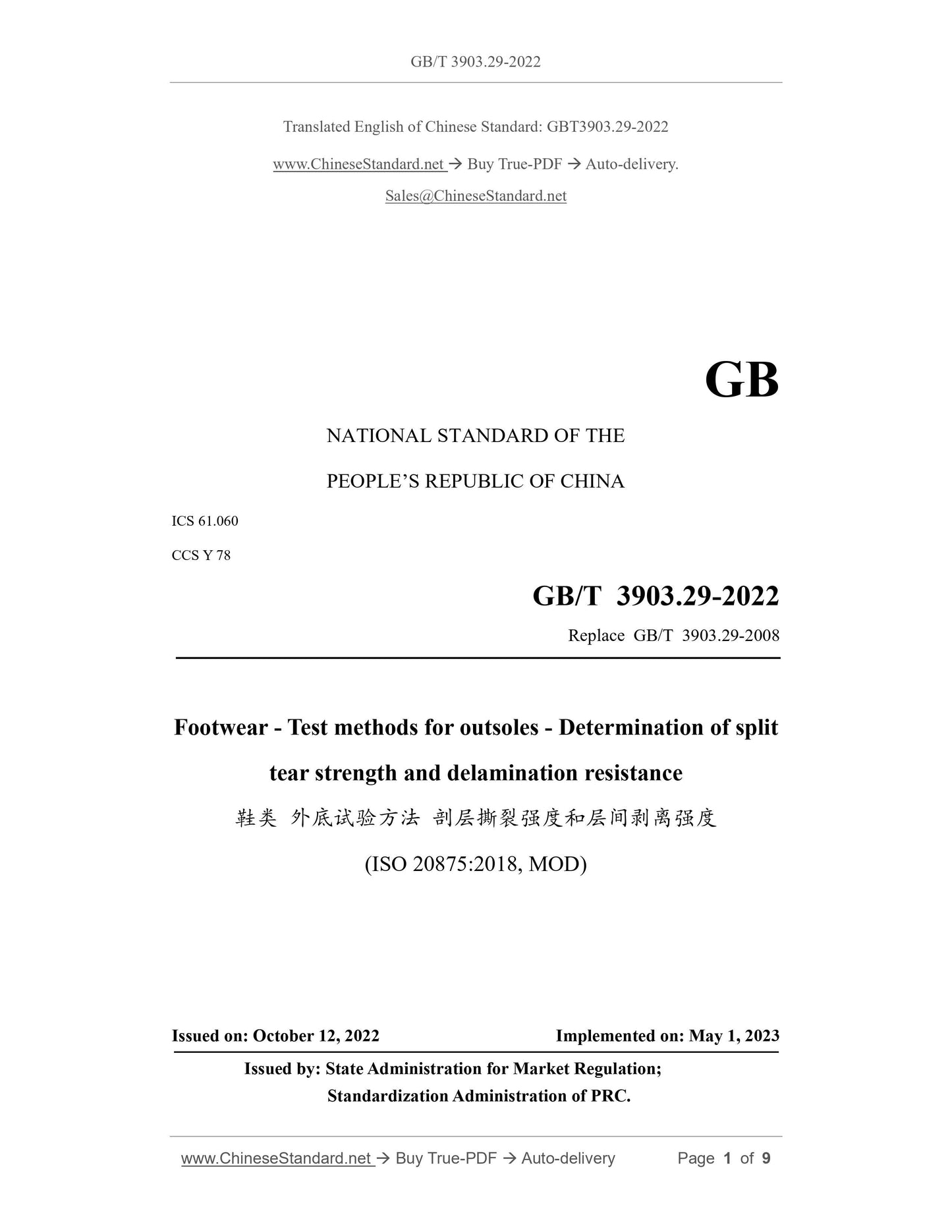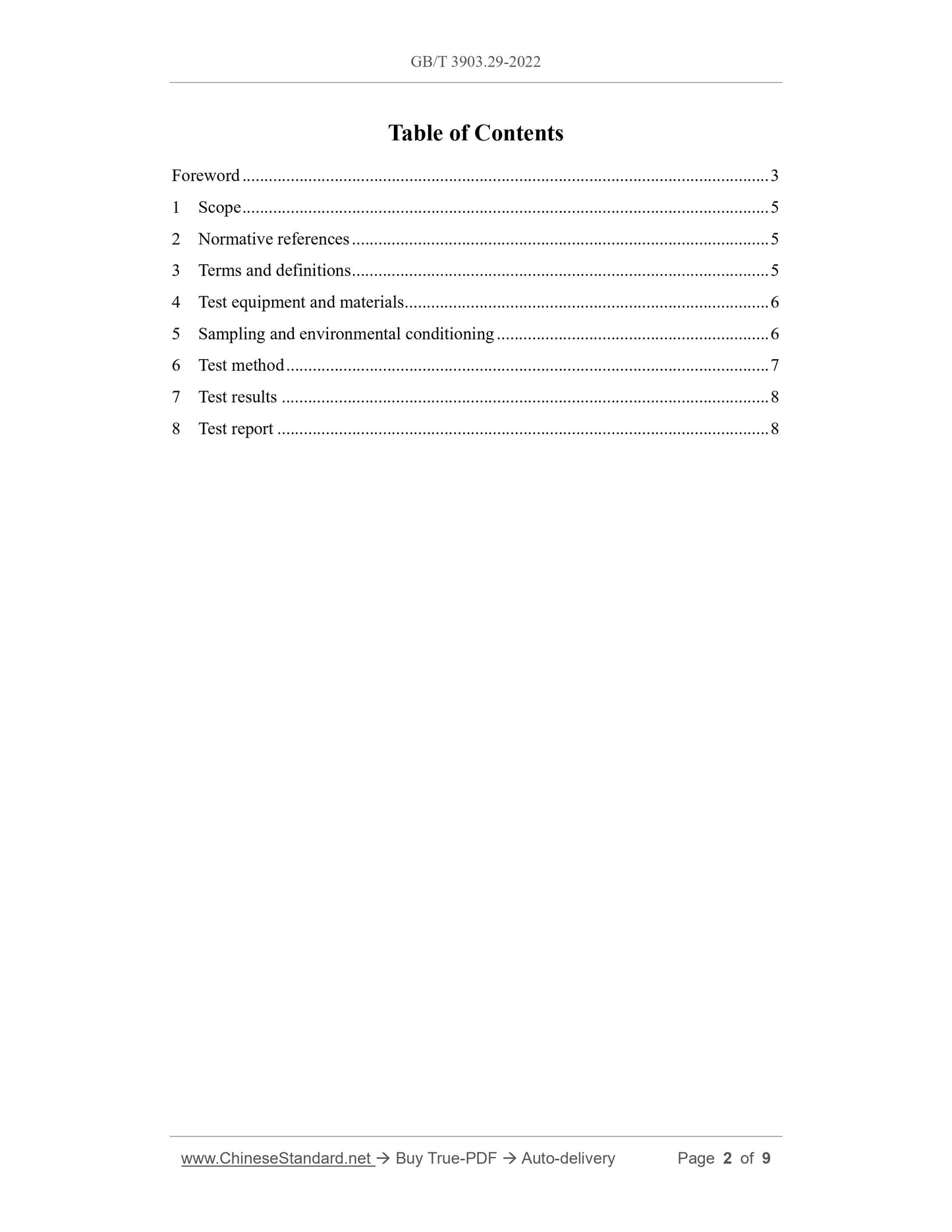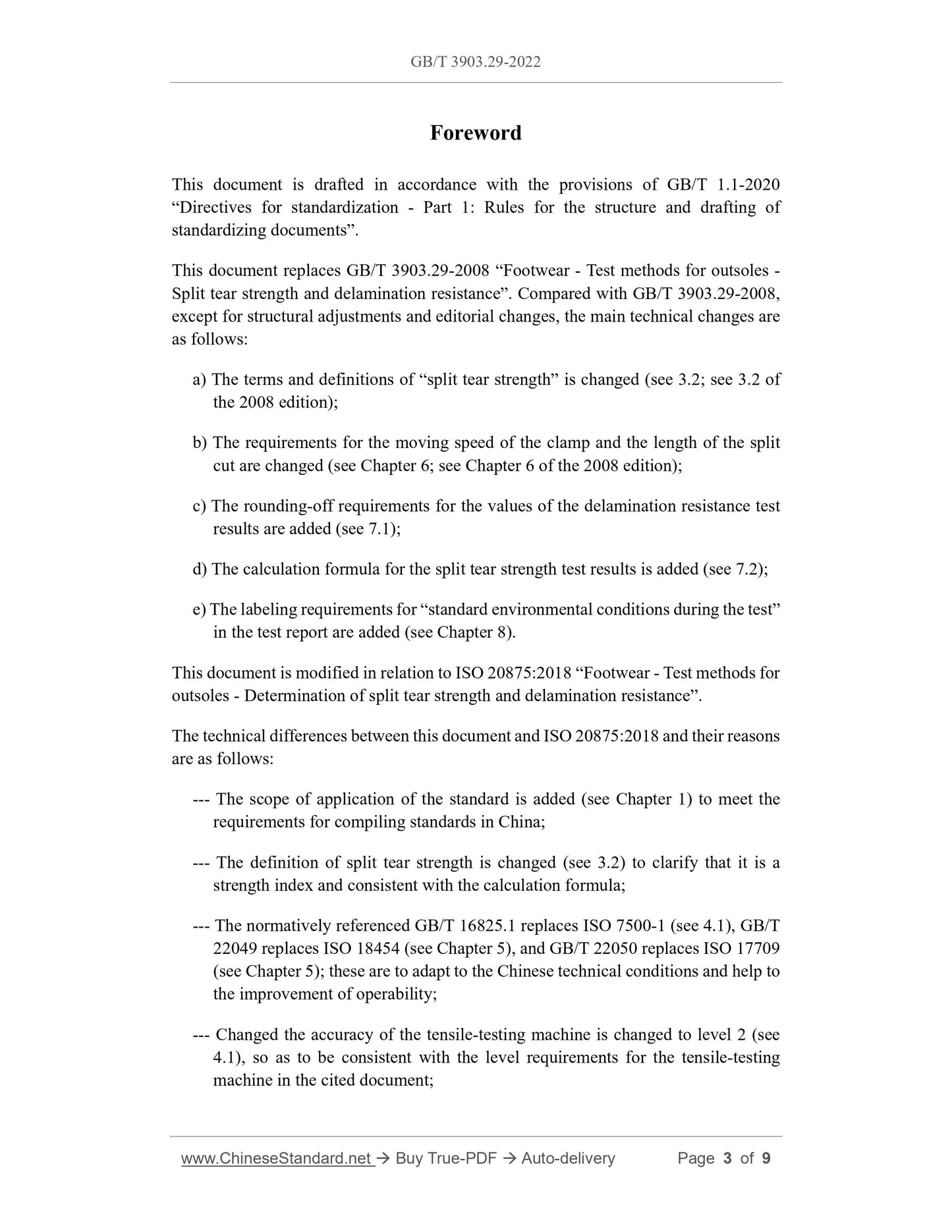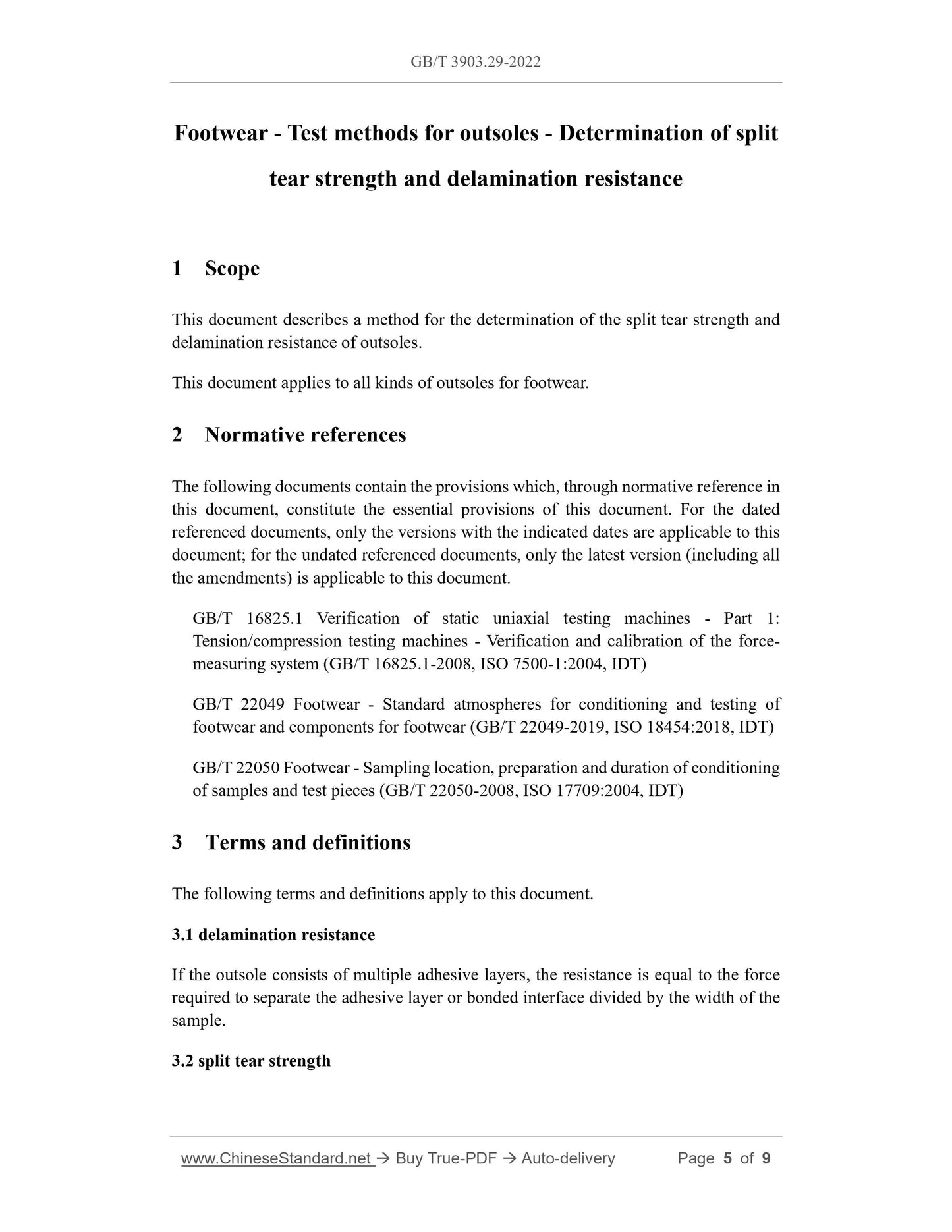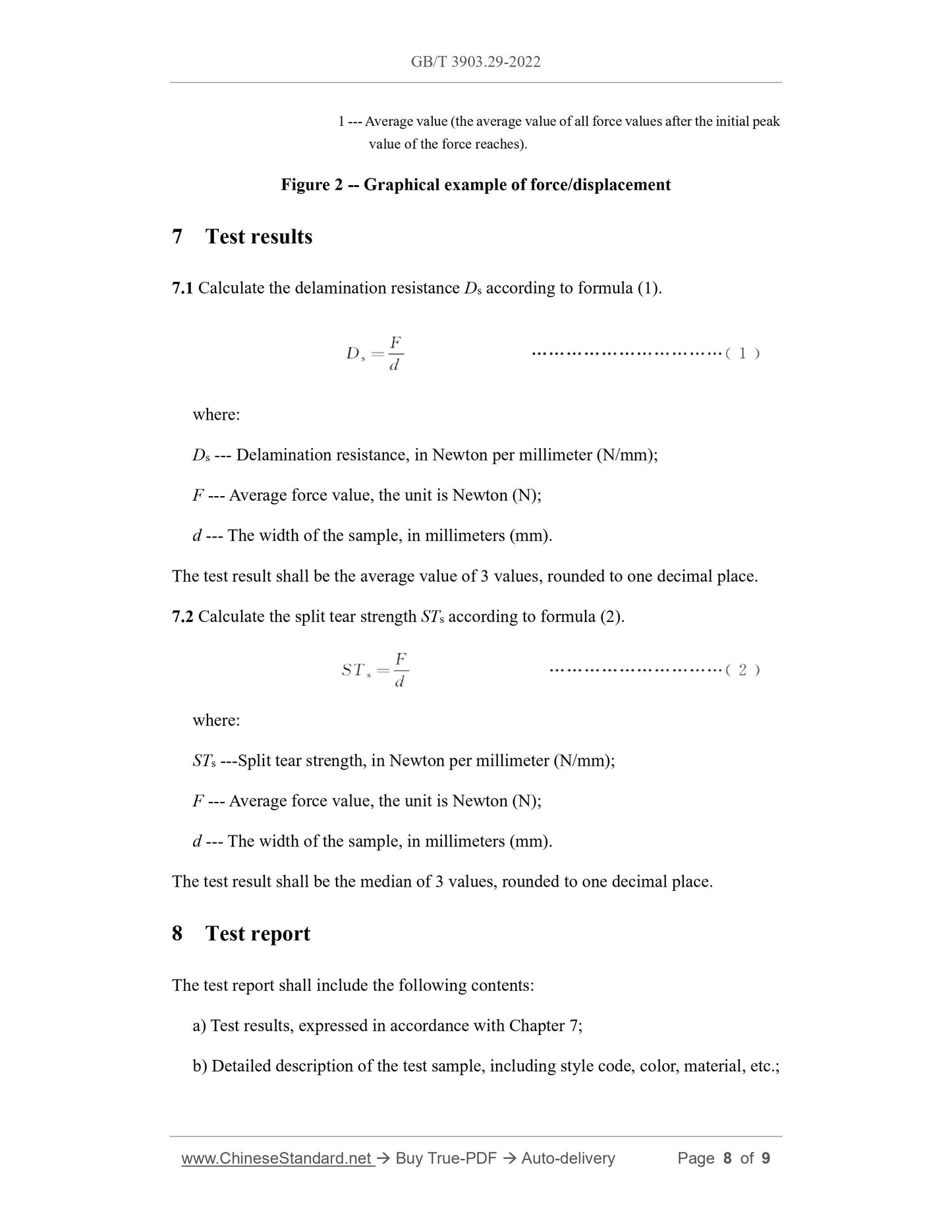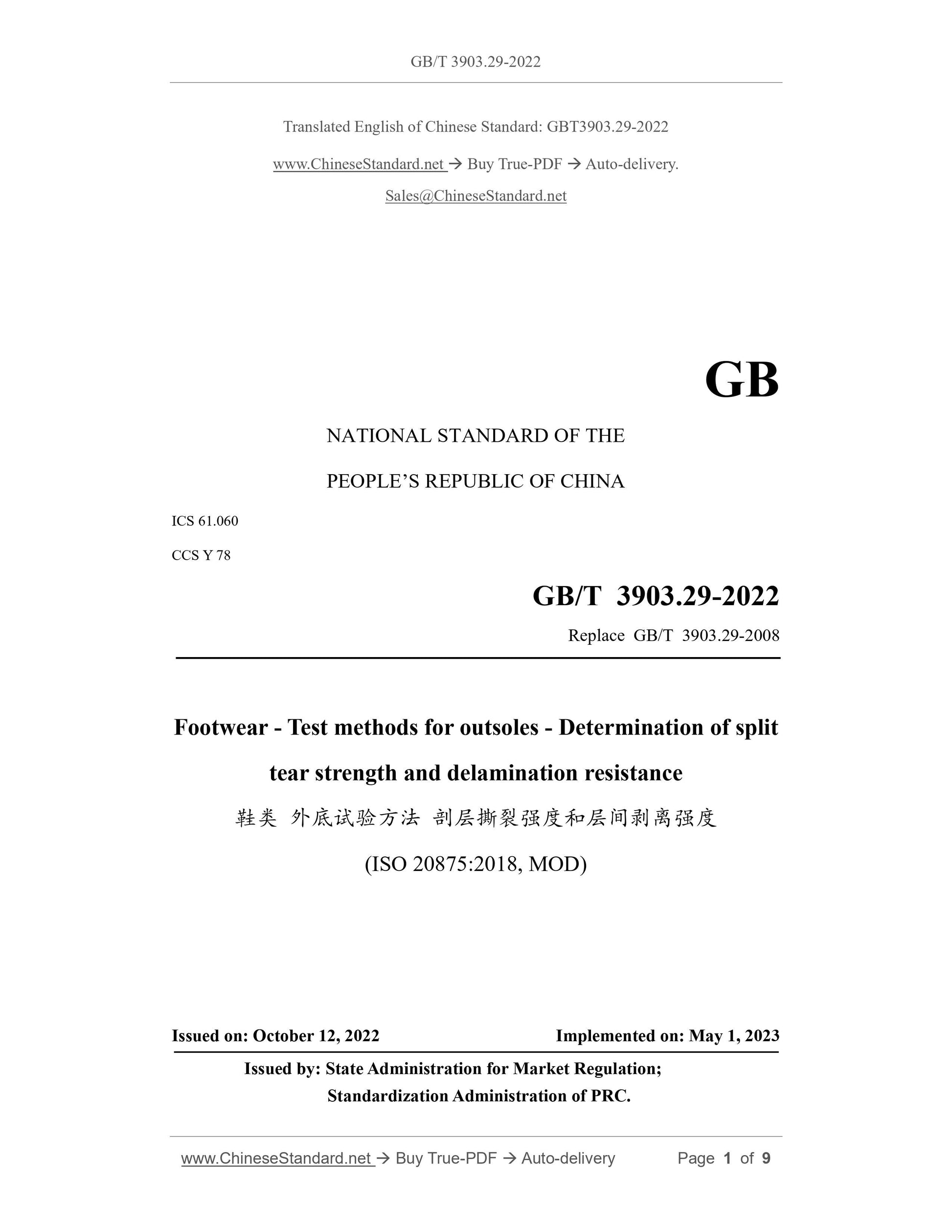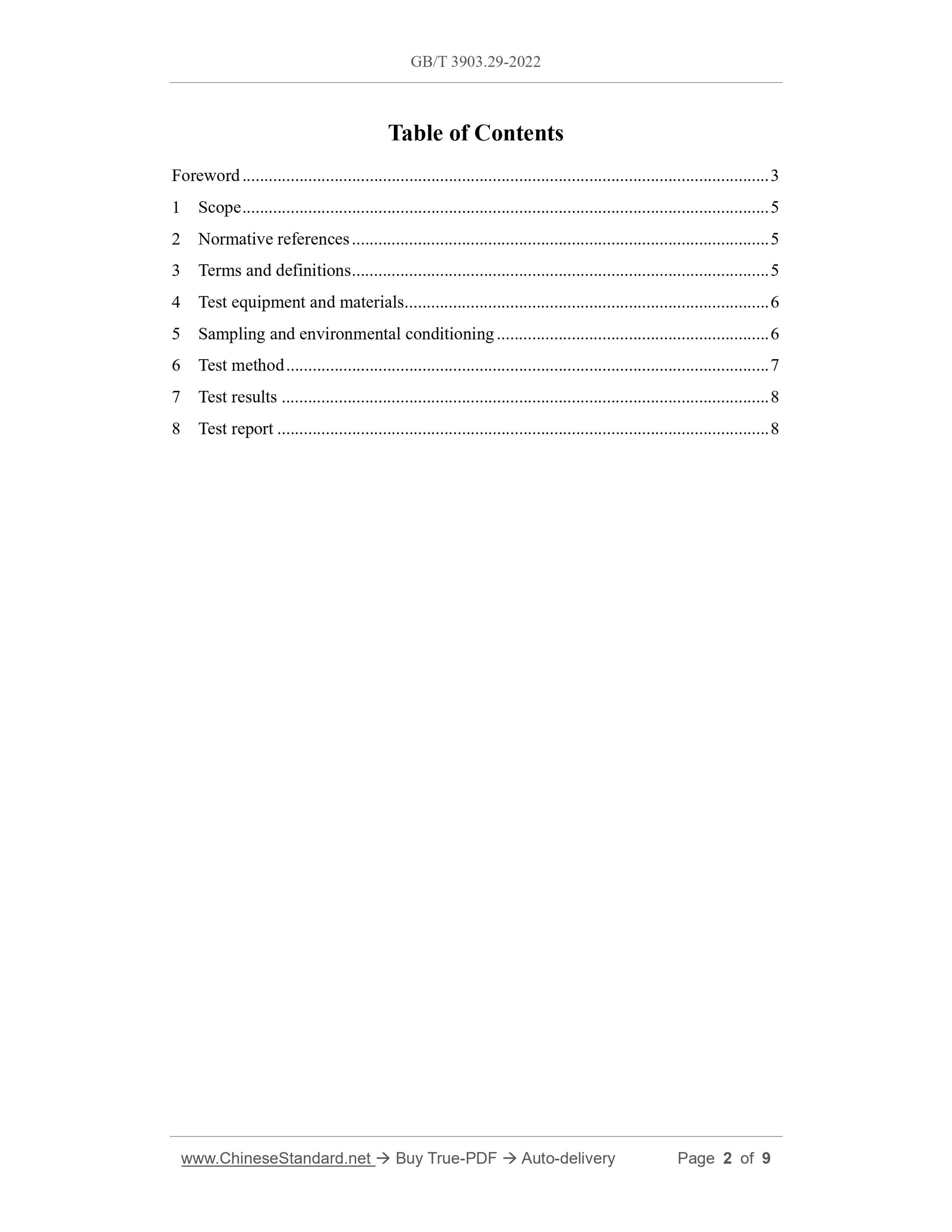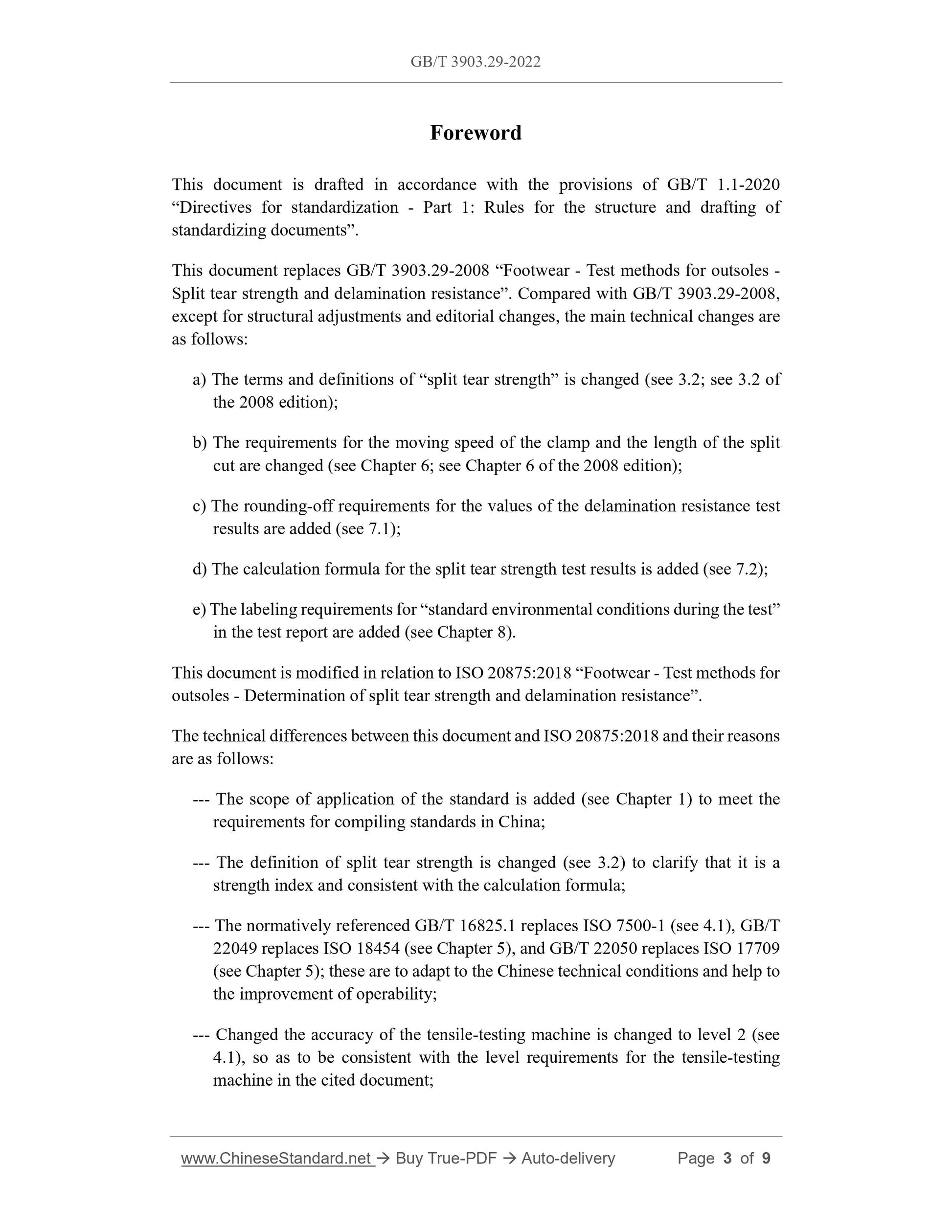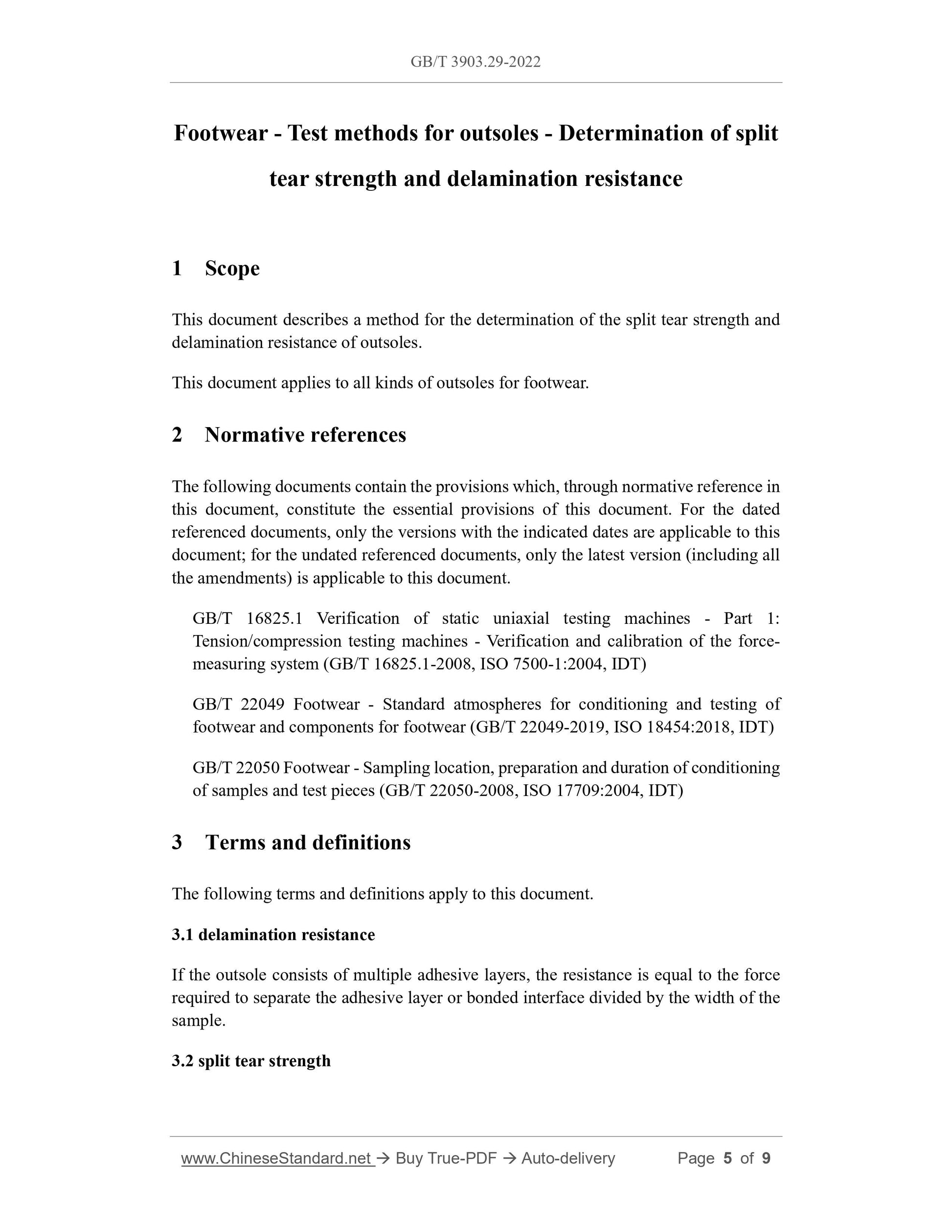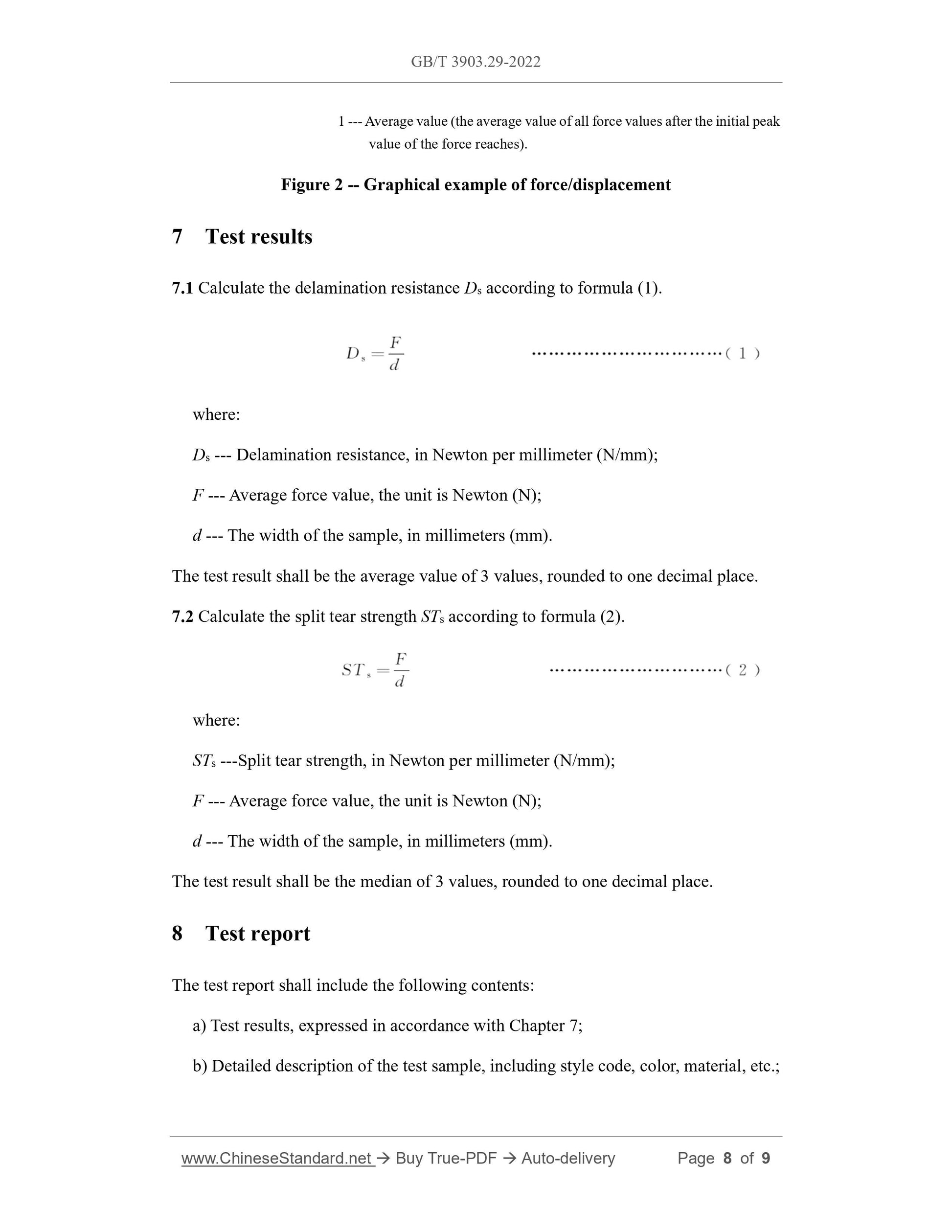1
/
of
5
www.ChineseStandard.us -- Field Test Asia Pte. Ltd.
GB/T 3903.29-2022 English PDF (GB/T3903.29-2022)
GB/T 3903.29-2022 English PDF (GB/T3903.29-2022)
Regular price
$125.00
Regular price
Sale price
$125.00
Unit price
/
per
Shipping calculated at checkout.
Couldn't load pickup availability
GB/T 3903.29-2022: Footwear - Test methods for outsoles - Determination of split tear strength and delamination resistance
Delivery: 9 seconds. Download (and Email) true-PDF + Invoice.Get Quotation: Click GB/T 3903.29-2022 (Self-service in 1-minute)
Newer / historical versions: GB/T 3903.29-2022
Preview True-PDF
Scope
This document describes a method for the determination of the split tear strength anddelamination resistance of outsoles.
This document applies to all kinds of outsoles for footwear.
Basic Data
| Standard ID | GB/T 3903.29-2022 (GB/T3903.29-2022) |
| Description (Translated English) | Footwear - Test methods for outsoles - Determination of split tear strength and delamination resistance |
| Sector / Industry | National Standard (Recommended) |
| Classification of Chinese Standard | Y78 |
| Classification of International Standard | 61.060 |
| Word Count Estimation | 10,179 |
| Date of Issue | 2022-10-14 |
| Date of Implementation | 2023-05-01 |
| Older Standard (superseded by this standard) | GB/T 3903.29-2008 |
| Issuing agency(ies) | State Administration for Market Regulation, China National Standardization Administration |
Share
